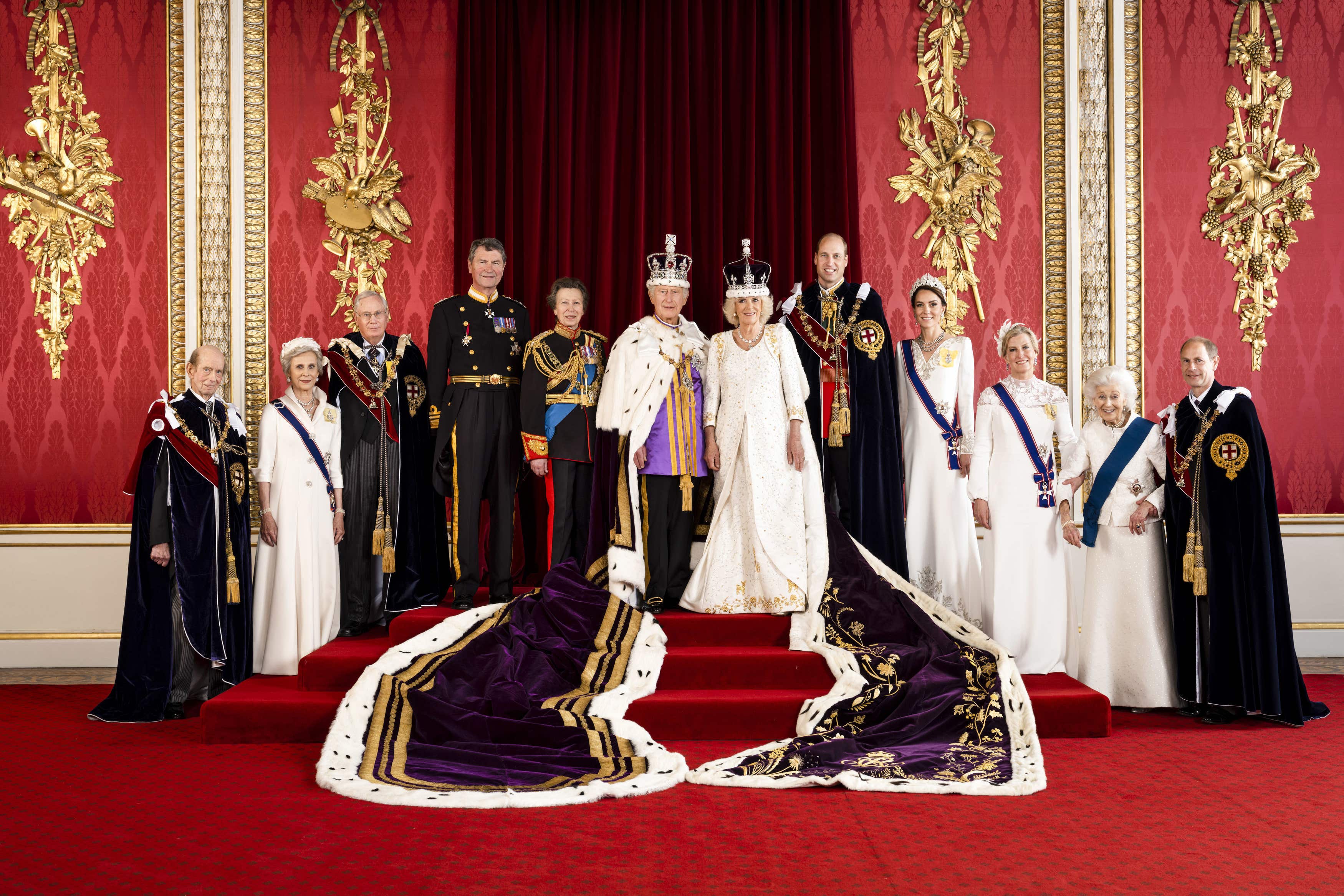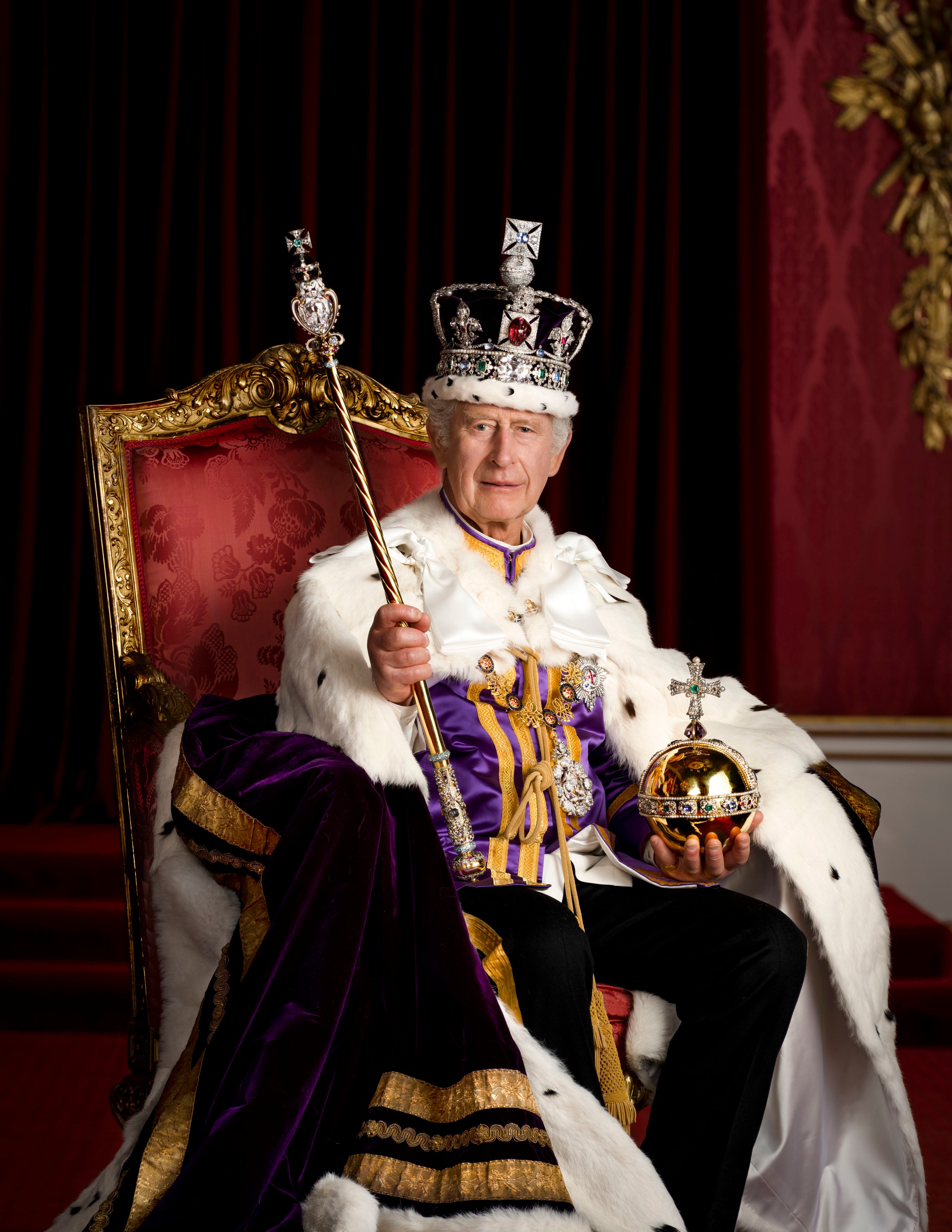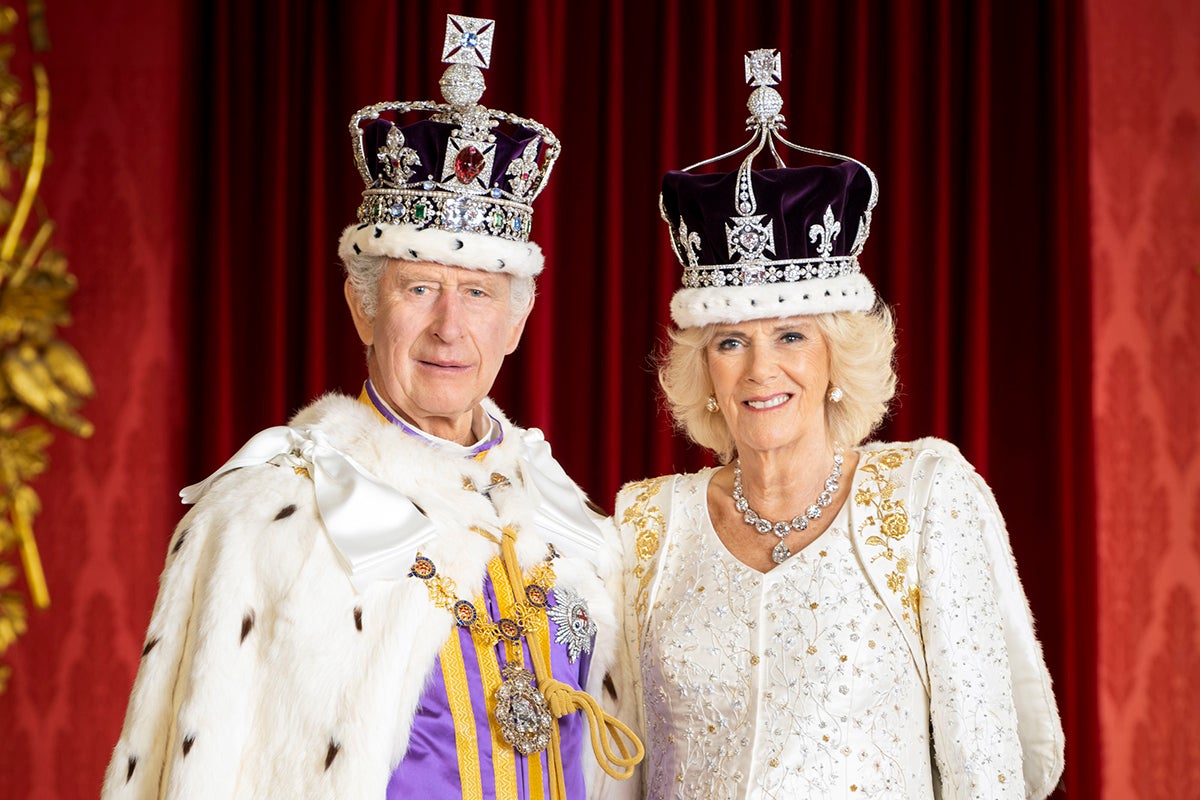
What’s it really like to photograph the official portraits at a royal coronation? You know, the ones that will end up on the front pages of newspapers everywhere, all over the world? Well, according to Hugo Burnand, the man who took the official photos of King Charles and Queen Camilla’s coronation at the weekend, it starts with an early morning journey by bike.
On 6 May, as the nation was waking up, Burnand set off at 7am from his London mews house near Notting Hill Gate. With him were a team of six assistants, including his daughter Una, 25. They cycled to Buckingham Palace on bespoke, regal-coloured purple and ivory Brompton bikes in their formal attire – even Una in her pink silk dress.
“It took about 25 minutes – we didn’t want to break out in a sweat,” Burnand tells me from his kitchen, when we talk just days after the portraits have been released to the public. They travelled light; all cameras and other equipment were already in situ at the Palace. “It feels really weird setting off [for the day] without a camera for the biggest job of your life,” he laughs.
By taking official coronation portraits of the monarch, Burnand is joining a tradition that is over a century old – but he is familiar with royal subjects. The former Tatler photographer is the only photographer with a royal warrant, given By Royal Appointment by the Prince of Wales, and photographed William and Kate’s wedding in 2011. On the now Prince and Princess of Wales’ big day, he used a jar of jelly beans to bribe the page boys and bridesmaids in front of the camera – the leftovers of which are in his kitchen as a memento. Other high-profile figures snapped by Burnand include the late Queen to Lucian Freud and Michael Jackson, to tycoons such as David Tang and the Gettys in their South African game lodge. But he also brings a sense of fun to his pictures, too: he once photographed his family naked on top of each other for their annual Christmas card.
Burnand’s coronation portraits, taken moments after the royal family had appeared on the balcony, are regal but relaxed. One of the images shows the new slimmed-down monarchy, an idea Charles has long favoured, with William and Kate [the Prince and Princess of Wales], Anne [the Princess Royal], and Edward and Sophie [the Duke and Duchess of Edinburgh] among some of the select few included.
It may have been a day full of pomp and formality, freighted with historic importance, but Burnand says there was “a lovely buzz” in Buckingham Palace’s throne room. “There was definitely a happy feeling. It was cosy with family, children and friends milling about,” he tells me. Prince George, Princess Charlotte and Prince Louis were all part of the photoshoot, which made it “beautiful” and “uplifting”. “It was like the last bit of the race [for the royal family] – there was an energy there which I know I got in the pictures,” he says.
For his solo portrait of Charles, Burnand had consciously mirrored society photographer Cecil Beaton’s coronation portrait of Queen Elizabeth II in 1953. The painterly portrait of Charles shows him in his full regalia, wearing the imperial state crown, his back slightly to one side of the official state chair in which he sits. His position is similar to that of his mother when she posed for Beaton, when she, like her son now, held the orb and sceptre with cross.
In another image, Queen Camilla is pictured alongside Charles, the pair standing close to one another and smiling. In both, Camilla wears Queen Mary’s crown, the train of her long embroidered robe of state spread in front of her. “I think it’s very important the way she is standing. There is a humility or humbleness to it, although she is wearing this magnificent crown,” says Burnand. “She has a fantastic sense of humour and part of that humour I think comes through just with the dogs on her dress [her rescue dogs Bluebell and Beth were embroidered on her coronation robe].”
Leading up to the event, Burnand spent weeks researching past coronation photos – King Edward VII’s was the first to be photographed in 1902 – and three days setting up the lighting, so that when the royal family came in “you are ready to go”, says Burnand.

Although there was a sense of fun throughout the shoot, Burnand knew he would have just one hour to capture the images. Speed was of the essence, so four cameras were set up on tripods, to save time on setting up the shots. From previous experience, Burnand and his team knew how to manage the pressures and parameters of the occasion to get the best photographs.
“We all knew what we had to do... we were well enough organised and prepared [to do that] but you have to allow for the humanity to come into the pictures – and the humanity is real life. The person you are photographing [has] to hit the ball back to you. You talk to them. They talk to you. I might even take a picture while talking [to them].”
Helping matters was the fact that Burnand is a familiar face: he also took the photographs for Charles and Camilla’s wedding in 2005, so was able to put them at ease. In fact, he first began photographing Camilla 20 years ago, after he was introduced by her sister, Annabel Elliot.

“It could have been a number of photographers [for the coronation] – but having a track record helps,” says Burnand about landing the job. He had been working with Charles and Camilla on portraits released ahead of the coronation – including a relaxed shot of the couple standing side by side in the Blue Drawing Room at Buckingham Palace, both dressed in blue – when, he says, “it gradually dawned on me that I was the one doing the photographs”.
Charles and Camilla were clearly fans of his style: his portraits have an approachable feel.
“I wanted them [the portraits] to be authentic,” says Burnand. “I like people when they look at a portrait to engage with the person. What you want to connect to as a viewer is the emotions of that person – that’s when you know it’s a good portrait.”

By the time Burnand and his team left the Palace, it was bucketing down with rain. Getting back on their bikes, they rode home via Hyde Park Corner taking refuge under Wellington Arch with “a whole load of tourists with their cameras and their Union Jack umbrellas” and “us in our morning coats”. Arriving home at 5pm, he says they all looked like “drowned rats”, but felt high after their hardworking, historic day. They cracked open a bottle of champagne, left on the doorstep by a neighbour.
Despite his pivotal role in the day, Burnand didn’t see much of the coronation itself – just the flypast, from the window of the throne room. Watching the ceremony is next on his to-do list, he says. “It’s important to keep one’s feet firmly on the ground,” he tells me before I leave. Just as important, though, to keep one’s eye to the lens.







